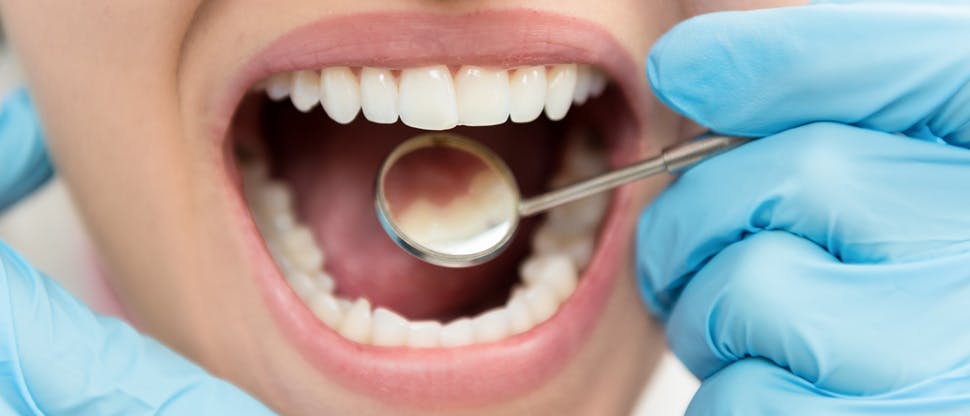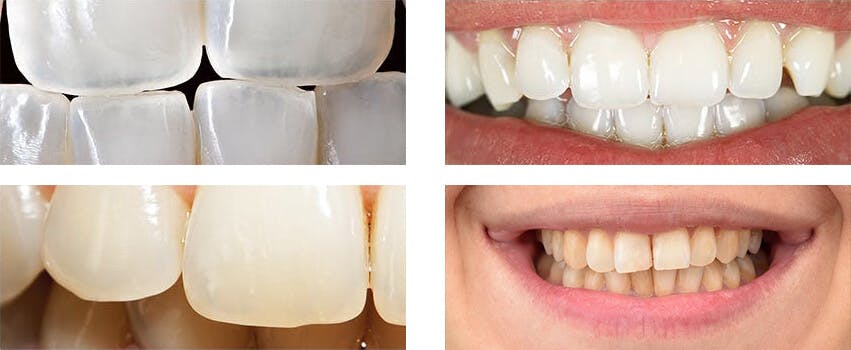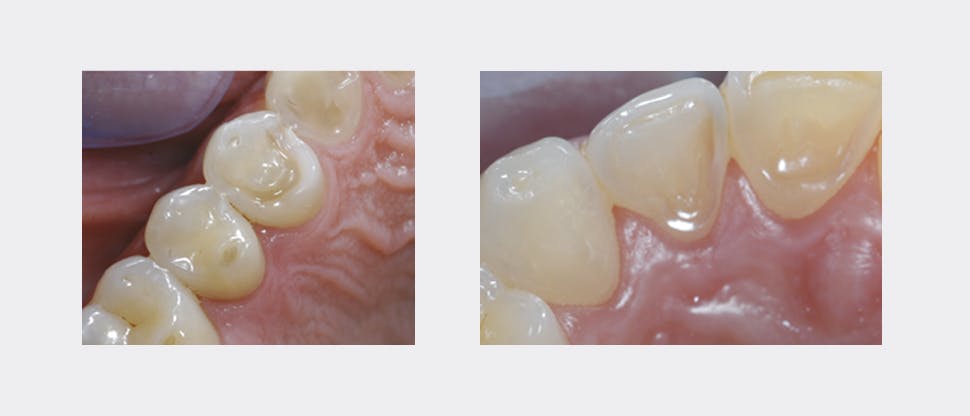Enamel Erosion: Diagnosis

Enamel Erosion: What To Look For
Patients at risk of developing enamel erosion can be proactively identified using risk factors and lifestyle.
Identifying enamel erosion can be difficult for patients and dental professionals alike. Dentists have difficulty correctly diagnosing (both detection and differentiation) and managing enamel erosion, across all severity levels and particularly in early stages.1,2
Patients at risk of enamel erosion include:2-4
- Soda swishers
- People who snack on acidic foods frequently throughout the day
- Patients consuming diets with high levels of fruit and fruit juices
- Patients with eating disorders
- Patients with gastric reflux
Early Diagnosis of Enamel Erosion is Important to Prevent Further, Lasting Damage5

Common Features of Enamel Erosion3,6
Clinical appearance is critical to identifying enamel erosion. Over time, the wear caused by enamel erosion can lead to reduced thickness of enamel and a change in the texture, shape, and appearance of the teeth. If dentin becomes exposed, this may also cause teeth to become sensitive.3,6
These include:3,6,7
- Yellowing (advanced sign)
As erosion becomes more severe, enamel thins, exposing the dentin underneath and causing teeth to appear yellow or discolored.
- Thinning and translucency
Teeth that appear thin and translucent are a sign that tooth enamel erosion may have already begun.
- Surface changes (smoothing)
One sign of dental erosion is the loss of the surface of the tooth, leading to a smooth, shiny appearance. - Loss of structural features (rounding)
Dental erosion, if untreated, can lead to the progressive loss of the surface of the tooth. The loss of tooth structure can require complex and lengthy treatment including fillings, crowns etc.

Other Signs of Enamel Erosion3,6
These include:
- Palatal erosive tooth wear
- Occlusal cupping
